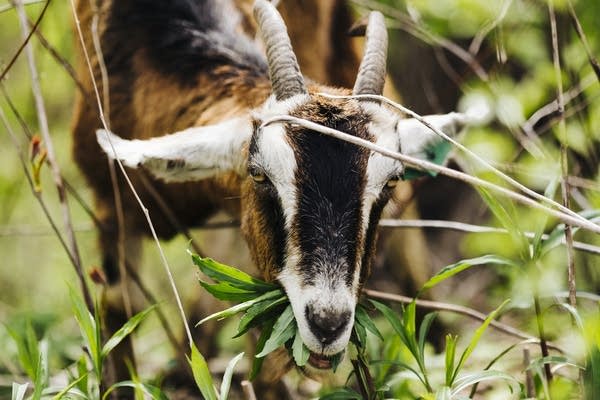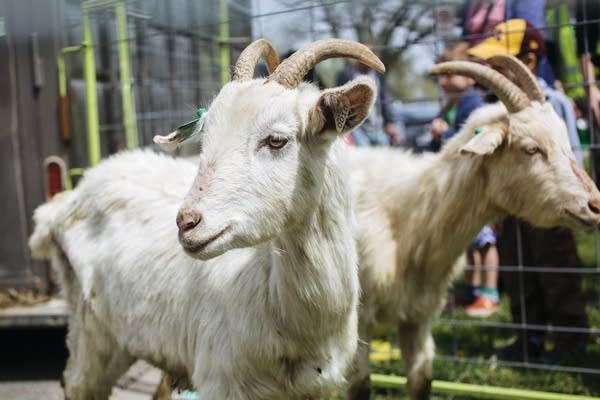Hungry goats join the ranks of St. Paul city staff

Go Deeper.
Create an account or log in to save stories.
Like this?
Thanks for liking this story! We have added it to a list of your favorite stories.
The goats are loose in St. Paul, and they have an enemy: invasive plants.
A herd of about three dozen goats took to the bluffs at Indian Mounds Regional Park on Tuesday where they'll start chomping down on plants like buckthorn and garlic mustard.
"They're our fellow city staff for the next two seasons," said Angie Tillges of St. Paul's Great River Passage plan.
The release of the goats brought out a crowd of young kids wanting to see the animals do their thing, and that was the point.
Turn Up Your Support
MPR News helps you turn down the noise and build shared understanding. Turn up your support for this public resource and keep trusted journalism accessible to all.

"Part of this is it draws people's attention to these natural spaces along the river, teaches the public a bit about what invasive species are," Tillges said "Hopefully [it] gets people interested."
Local news media took the bait. One of the 10 or so reporters strapped a GoPro onto a goat.

The animals come from a Faribault-based goat-rental company called Goat Dispatch. They'll work in regional parks around the Mississippi River into the fall. They'll spend about a month at each park, Tillges said, and return to some spots for a repeat grazing.
Hiring out grazing goats has many benefits. First off, they're cheap — about half the cost for this project, according to Tillges.

They're also at home in rugged terrain, such as the bluffs at Indian Mounds. And goats are easier on the environment, which is especially important around the Mississippi watershed.
A day in the life of a grazing goat is a good one.
They don't rise too early, around 8 or 9 in the morning, said Goat Dispatch's Jake Langeslag.
"They'll eat heavily for about a couple hours, then they'll sit down about midday, kind of take a little siesta," Langeslag said. "Then they get back up and eat again."

And if the night allows for it, they'll keep on eating.
Langeslag's a trained ecologist, so he knows what the goats will eat.
"They have like a hierarchy," he said. "Our job is to just manage and make sure they're not overeating a site and not undereating."
In the goat food chain, plants like buckthorn and honeysuckle get chomped first. They'll eventually make their way down to grasses, but Langeslag said you probably don't want them to cut your lawn — it wouldn't be cost-effective.

Goat Dispatch mostly does bigger projects, like city parks or larger restoration efforts.
But that hasn't stopped people from trying to get the goats out for other jobs. They're popular animals.
"I get a lot of calls for birthday parties, or prom, asking for their date to the prom," Langeslag said. "I don't know what it is with goats lately."


